Innovation labs or rapid innovation centers are developing at fast pace. Hereafter, we prolongate the previous review of Innovation Labs, with an industry point of view.
Each archetype can inspire the managers in charge of creating an innovation lab, and arm them to compose their own recipe for success.
4 types of Innovation Labs from an industry perspective
Sharing the point of view from the man on the field with schoolar research conducted by Pierre Foullon, an enlightened student at Dauphine and Telecom Paristech Master IREN, we’ve come across 4 types of innovation labs, sorted on specific target criteria:
- Disruptive lab searchs for new business models;
- Rapid innovation lab looks for agility, and speed;
- Open innovation lab aims at cooperation;
- Innovation culture lab propagates a culture of audacity across the company.
Following the description of the 1) Disruptive Labs, and 2) Rapid Innovation Labs, we move now to the 3) Open Innovation Labs, and 4) Innovation Culture and Intrapreneurship Labs.
3) Open-Innovation and Co-Creation Labs
These labs have a focus on collaboration with start-ups, partners or users, involving information sharing, and co-design to innovate. This model is more commonly referred to as Open Innovation. Open innovation can happen at the front-end of the innovation process, during the ideation phase, later on, during the development process, by combining technologies, components, and know-how for example, or at the end, during the commercialization process, by sharing customer base, and distribution channels.
A) Airbus BizLab is an aerospace incubator based on an open innovation model combining both Airbus startups, and intrapreneur skills. It is lead by Bruno Guttieres.
The incubation program takes place over 6 months, allowing startups to share their knowledge with experts from the group in various fields. The most innovative projects are selected and financed by the firm. All actors are encouraged to share their experiences and skills to increase added value, and innovate both quickly and qualitatively. By welcoming internal projects as well as start-ups projects, Airbus wants to stimulate internal innovation concurrently to opening the innovation engine to other ecosystems, and moving beyond the ‘Not Invented Here’ syndrome.
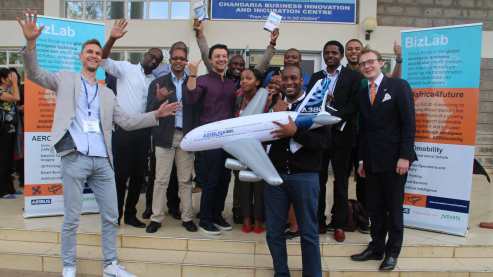
B) The Mixer is a start-up accelerator belonging to the UniBail group, the largest commercial real estate company in Europe. It offers a support for 16 weeks whose main objective is to accelerate business between startups and Unibail.
After a selection period, entrants have access to the teams, infrastructures and portfolios of the commercial real estate group. The program is organized under 6 main themes: co-development with Unibail, coaching and mentoring, funding strategies, prototyping, hosting of startups and events. These 6 axes foster relationships with the real estate giant to form future commercial partnerships.
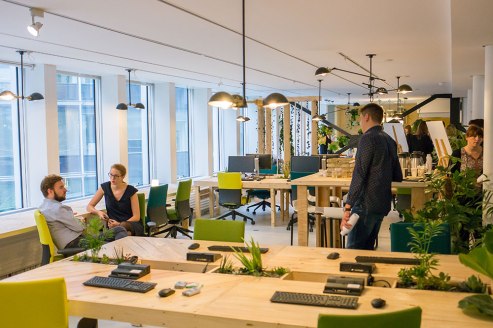
C) Orange Fab network of accelerators follows a similar objective: it covers 12 locations, and offers a 3-months accelerator program, searching for startups with existing products, looking for growth and distribution opportunities, mainly in the telecom and digital industries.
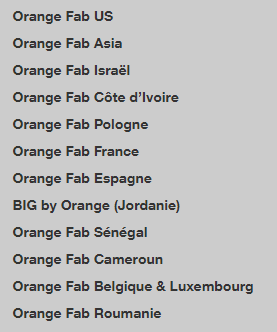
D) The Village by CA belongs to the same category: the open-innovation incubator set by Credit Agricole bank and headed by Fabrice Marsella looks at detecting and supporting the next French unicorns in FinTech, and other industries. It brings startups closer to large companies (Sanofi, PSA, Sodexo, Avril, BETC…), which want to transform their models.
BNPP bank operates start-ups accelerator programs BNP Fintech and BNP Innov and Connect in a dedicated innovation space WAI.
4) Innovation Culture & Intrapreneurship Lab
To spread a culture of innovation within corporations, many tools are developed involving participatory innovation, crowdsourcing of ideas through challenges, and enticing intrapreneurship and entrepreneur spririt among employees. This way, corporations mobilize collective intelligence as well as they recognize employees contribution, and develop their engagement. These innovation programs can also be seen from a cultural transformation point of view.
A) Market leader in tires, Michelin has been under increasing competitive pressure from globalization in recent years. The industry knows many innovations (bi-gum tyres, tri-gum tyres, spherical tyres etc.). To keep pace with the times, Michelin’s innovation center has set up various tools to help spread a culture of innovation, such as InnovaGo, Innov’up challenges, Bibspace social network or the Michelin Incubator Program Office.
Some achievements:
- A partnership with Symbio FCell, a start-up specialized in fuel cells;
- Michelin Twill tire used on agricultural vehicles;
- Wecare a smartphone app for vehicle maintenance.
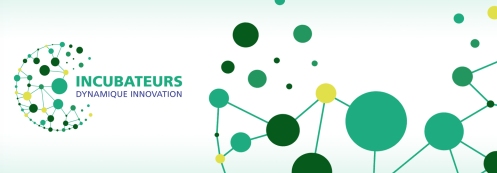
Something likes to point out Fabrice Poussière, founder of the Service Innovation Factory FabLab, which contributes to breathe a culture of service, digital, innovation, and agility in a hardware manufacturing environment.
Its main objective is to welcome every employee’s ideas. To do this, the group works closely with startup Aktan to transform ideas with high potential into business through all stages including prototyping.
Fabrice shares some precious lessons:
- Motivation is often as interesting as the idea;
- Mistakes are shared, best practices also: failures are seen as the source of future success;
- True value comes out of the information collected;
- Managers are part of the ecosystem: the idea has to get their buy-in just like from any other partner of the ecosystem.
Service Innovation Factory FabLab is structured in separate spaces: a ‘meeting area’ to welcome start-ups from the outside world, a ‘welcome area’ to greet newcomers with creative ideas, ‘prototyping area’, ‘fixed and free offices’, and ‘piloting headquarters’.
Service Innovation Factory FabLab gave birth to:
- SFCO2 a service to help airplane commanies reduce their fuel consumption;
- A Data Sandbox carrying works on Big Data;
- A remote endoscopy project, letting you help the local operator who’s controlling the airplane engine;
- A tablet artefact with Microsoft.
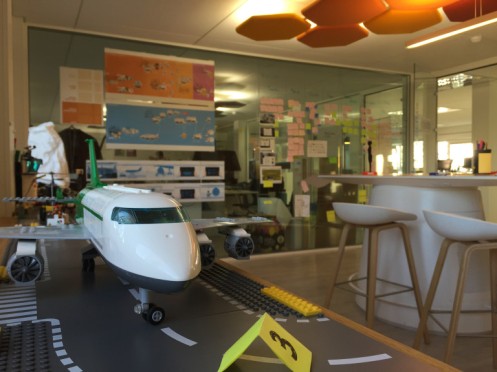
C) Orange Intrapreneurs Studio
Orange studio addresses employees who have a powerful creative idea, and incubate them to transform their idea into an offering, enriching Orange’s portfolio. Orange puts substantial resources to make it a success: employees are 100% dedicated to the project during 12 to 18 months, they receive resources (coders, designers, budget), they are incubated in innovation places, and they have the support of an intrapreneurs coach.
Other remarkable iniatives have been developed by:
- Vinci with its Leonard open laboratory, balancigg 4 pillars (technological watch, prospective analysis / foresight on autonomous car, smart city, and digital infrastructures & buildings, intrapreneurs and cross-business innovative projects incubation, and tailored start-ups acceleration)
- Lufhansa IT with its Invent IT Intrapreneurs program, involving employees crowdfunding.
Summary
The table below shows how the different innovation labs in the field rank into the typology, and what kind of tools and approaches they use to reach their goal:
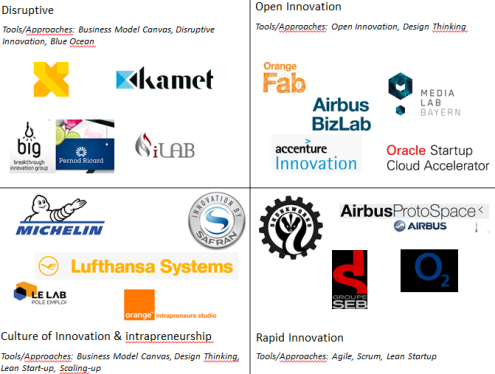
To conclude, the final table matches the different typologies reviewed in this serie of articles:


1 Comment